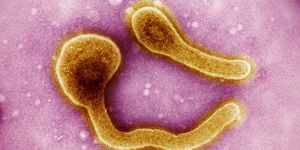Photosynthesis Further Explained Using Quantum Chemical Calculations
Photosynthesis is the process that plants, algae, and even certain species of bacteria use to convert sunlight into oxygen and chemical energy stored as sugar (aka gluclose). But what are the mechanisms behind one of nature's most profound processes?
These are questions that a team of researchers led by the Ludwig Maximilian University of Munich (LMU) hope to answer as they used quantum chemical calculations to examine a photosynthesis protein complex known as photosystem I (PSI) in hopes of better understanding the complete process of photosynthesis and how plants are able to convert sunlight to energy, specifically pertaining to how chlorophylls and the reaction center play their roles in the process.
“Although the complicated energy transfer inside the photosystem has been studied for decades, there is no consensus up to today about the exact mechanism,” said Dr. Regina de Vivie-Riedle, who is a Professor of Theoretical Femtochemistry, and a co-author on the study.
For the study, the researchers calculated the electrical charges produced by chlorophylls residing within a lipid membrane using a supercomputer at the Leibniz Supercomputing Centre, which is operated by the Bavarian Academy of Sciences and Humanities. With this, they were able to gain greater insights into the overall process of photosynthesis.
The study’s findings revealed what the researchers call “red chlorophylls”, which bear the responsibility of absorbing light at decreased energy levels than other chlorophylls due to their ambient electrostatic effects. Because of this, their absorption spectrum was observed to be red-shifted, meaning the light is stretched. The team also observed the existence of energy barriers between the reaction center and antenna complex of the photosynthetic structure.
“This seems surprising at first glance because there is no obvious gradient along which energy is transferred from the antenna complex to the reaction center,” said Sebastian Reiter, who is a PhD student at LMU, and lead author of the study.
The researchers concluded that energy variances between chlorophylls allow pathways into the reaction center to both open and close, which the authors state could explain the high efficiency of PSI.
“Our atomistic simulation of these processes enables a microscopic understanding of the system and its dynamics in its natural environment, complementary to experimental approaches,” concludes Dr. de Vivie-Riedle.
What new discoveries will scientists make about photosynthesis in the coming years and decades? Only time will tell, and this is why we science!
Sources: National Geographic, Chemical Science, Ludwig Maximilian University of Munich
As always, keep doing science & keep looking up!









